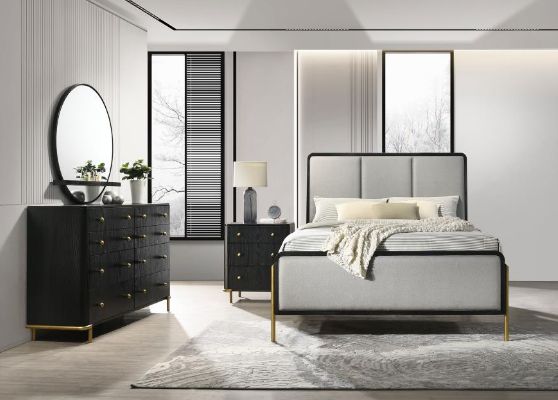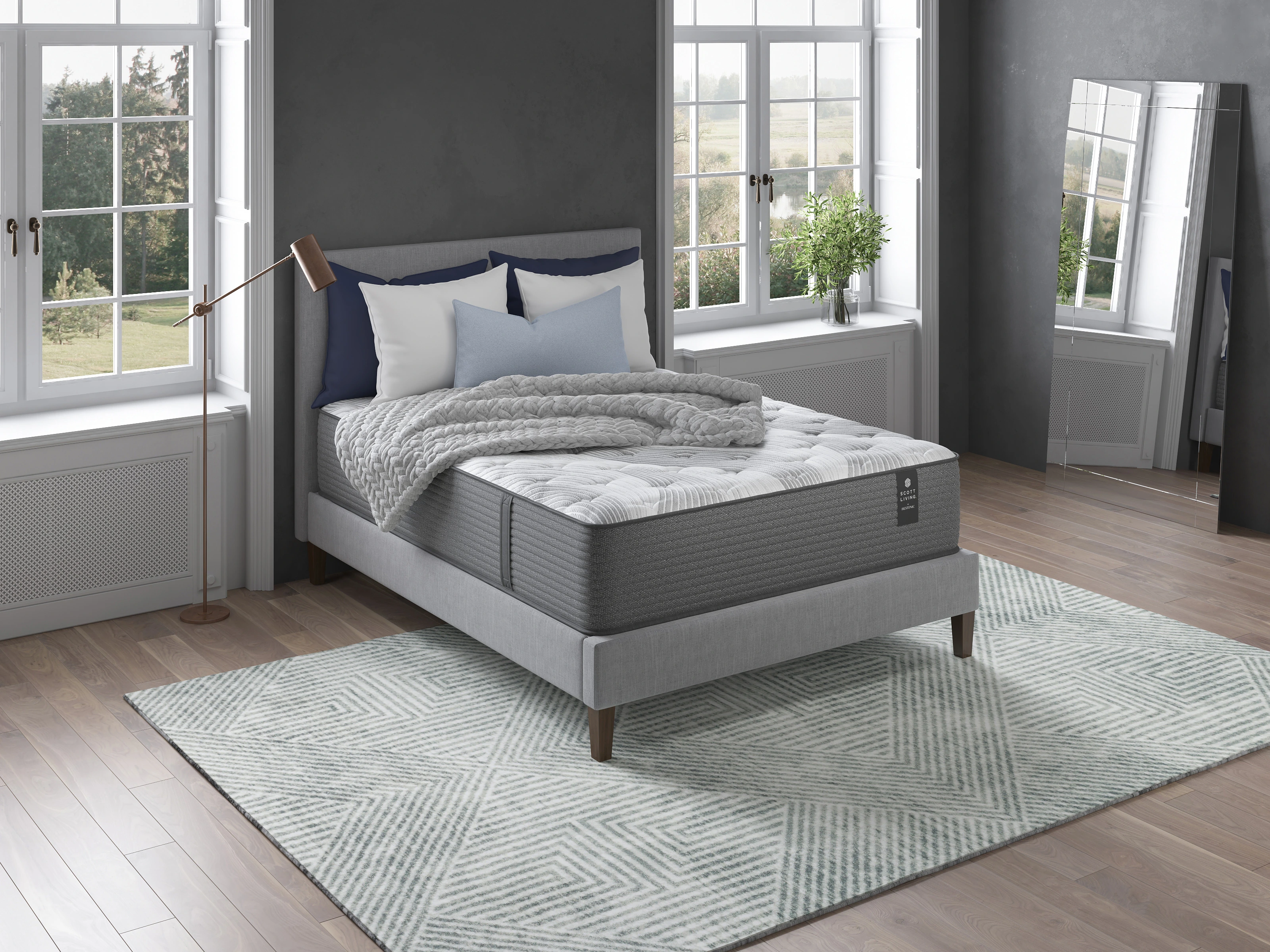All Categories
Featured
When decorating a home, selecting the ideal furnishings design plays a crucial function in forming the atmosphere of a room. 2 of the most preferred furniture designs are modern and standard, each with its one-of-a-kind attributes.
Traditional Furnishings: Standard furniture welcomes ornate styles, elaborate carvings, and timeless types inspired by previous historical durations. This design is rich carefully, commonly including bent lines, rolled arms, and attractive embellishments. Standard furnishings has a formal, innovative appearance, and the focus gets on great workmanship. Pieces frequently consist of elements like claw-foot legs, attractive moldings, and leather furniture, creating an elegant, classic feel in any kind of area.
![]()
Conventional Furnishings: Typical furnishings is known for its usage of rich, top notch materials such as solid timber, leather, and natural materials. Conventional furniture finishes often tend to be sleek and dark, giving pieces a feeling of weight and high-end.
Typical Furnishings: Conventional furniture usually uses deeper, richer colors that evoke a feeling of warmth and elegance. Additionally, patterns are often utilized in conventional furnishings, such as flower prints, stripes, or damask, including deepness and structure to the space's style.
![]()
Traditional Furnishings: While convenience is essential in traditional furniture, it is not always the key focus. Traditional furniture stresses deluxe and elegance, often featuring cushioned seating and thick furniture.
![]()
Conventional Furnishings: Conventional furniture tends to stand out extra in a room due to its ornate and classic layout components. While it can be mixed with contemporary aspects for an upgraded appearance, standard furnishings generally keeps its very own identification and can really feel leading within a space.
Standard Furniture: Typical furniture is developed to last and never goes out of style. For homeowners looking for sustaining, ageless furnishings that keeps its value and charm, conventional pieces are an excellent financial investment.
Conclusion. Ultimately, the option between modern and typical furniture boils down to your personal choices and the sort of atmosphere you want to develop in your home. Contemporary furnishings is streamlined, useful, and adaptable to current patterns, while conventional furnishings is classic, glamorous, and concentrated on intricate information. By understanding the crucial differences in between these 2 styles, you can better curate a home that mirrors your preference, lifestyle, and the ambiance you want.
- Layout and Forming. Contemporary Furniture: Contemporary furniture is understood for its smooth, minimal designs that prioritize simpleness and capability. Contemporary furnishings can integrate elements from various durations, making it extremely functional.
Traditional Furnishings: Standard furniture welcomes ornate styles, elaborate carvings, and timeless types inspired by previous historical durations. This design is rich carefully, commonly including bent lines, rolled arms, and attractive embellishments. Standard furnishings has a formal, innovative appearance, and the focus gets on great workmanship. Pieces frequently consist of elements like claw-foot legs, attractive moldings, and leather furniture, creating an elegant, classic feel in any kind of area.

- Materials and Finishes. Contemporary Furniture: Contemporary furnishings uses a varied array of products, consisting of wood, glass, metal, acrylic, and in some cases leather. While contemporary furniture does consist of timber, the products tend to be lighter and less luxuriant compared to typical items.
Conventional Furnishings: Typical furnishings is known for its usage of rich, top notch materials such as solid timber, leather, and natural materials. Conventional furniture finishes often tend to be sleek and dark, giving pieces a feeling of weight and high-end.
- Shade Combination. Contemporary Furniture: Contemporary furnishings embraces neutral, understated shades, with tones like white, gray, black, and beige generally featured. These colors aid create a spacious, airy feel that permits flexibility in designing. Bold accent shades are typically included to make a declaration, such as intense toss pillows, carpets, or art work. The shade combination in contemporary furnishings is typically kept easy to enable other layout aspects to radiate, developing a natural and balanced space.
Typical Furnishings: Conventional furniture usually uses deeper, richer colors that evoke a feeling of warmth and elegance. Additionally, patterns are often utilized in conventional furnishings, such as flower prints, stripes, or damask, including deepness and structure to the space's style.
- Convenience and Performance. Contemporary Furnishings: Performance is a main component of contemporary furniture. Parts are often created with ergonomic principles in mind to make the most of convenience and energy. This design includes multi-functional furniture, such as sofa beds, modular units, or furnishings with integrated storage, which makes them sensible for modern-day way of lives. Contemporary furnishings also often tends to have less ornamentation, which allows it to mix flawlessly into various types of spaces without subduing the space.

Traditional Furnishings: While convenience is essential in traditional furniture, it is not always the key focus. Traditional furniture stresses deluxe and elegance, often featuring cushioned seating and thick furniture.
- Design Combination. Contemporary Furnishings: Contemporary furniture is made to fit with the patterns of the time, and as an outcome, it works well in minimalist and contemporary spaces. Since modern furniture embraces simpleness, it can additionally be combined with more conventional items to produce a diverse appearance.

Conventional Furnishings: Conventional furniture tends to stand out extra in a room due to its ornate and classic layout components. While it can be mixed with contemporary aspects for an upgraded appearance, standard furnishings generally keeps its very own identification and can really feel leading within a space.
- Durability and Timelessness. Contemporary Furnishings: Contemporary furnishings, due to its connection to existing layout trends, can in some cases really feel dated as fads advance. However, its tidy, minimal visual and use high-quality products commonly ensure it remains relevant for numerous years, specifically when it concentrates on traditional modernist components. While modern furniture might not have the same historical weight as typical pieces, it can still stand the test of time via its versatility and continuous adaptation to brand-new trends.
Standard Furniture: Typical furniture is developed to last and never goes out of style. For homeowners looking for sustaining, ageless furnishings that keeps its value and charm, conventional pieces are an excellent financial investment.
Conclusion. Ultimately, the option between modern and typical furniture boils down to your personal choices and the sort of atmosphere you want to develop in your home. Contemporary furnishings is streamlined, useful, and adaptable to current patterns, while conventional furnishings is classic, glamorous, and concentrated on intricate information. By understanding the crucial differences in between these 2 styles, you can better curate a home that mirrors your preference, lifestyle, and the ambiance you want.
Latest Posts
Experience Waterfront Dining at Deauville Inn's Sunset Deck
Published Apr 21, 25
1 min read
Why Obtaining Pre-Qualified for Vehicle Financing Makes Feeling
Published Apr 21, 25
1 min read
Your Local Floor Covering Experts in Orland Park, IL
Published Apr 21, 25
1 min read